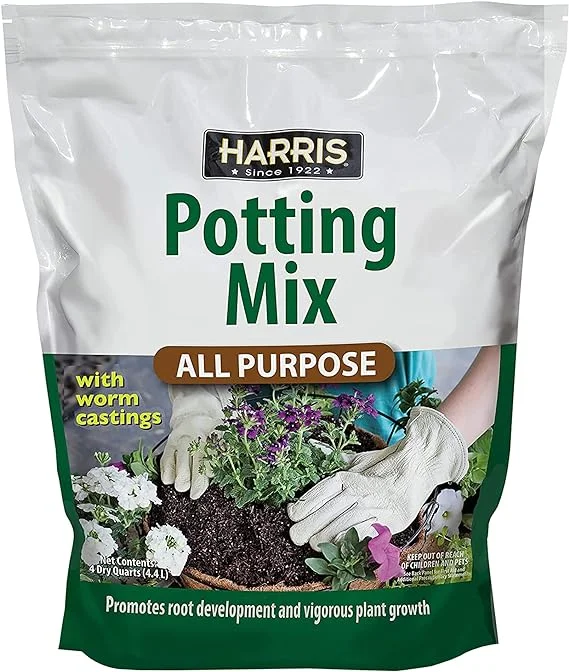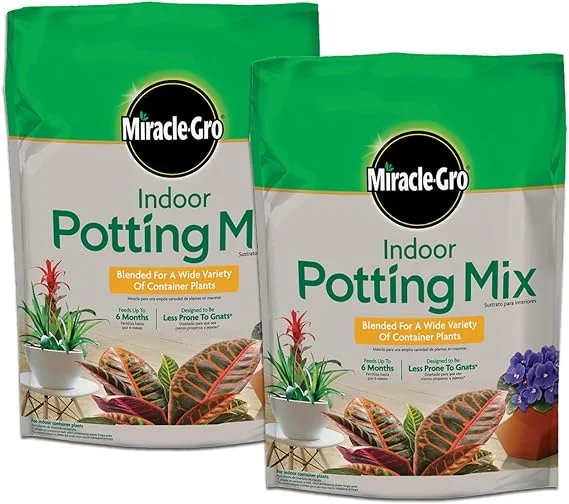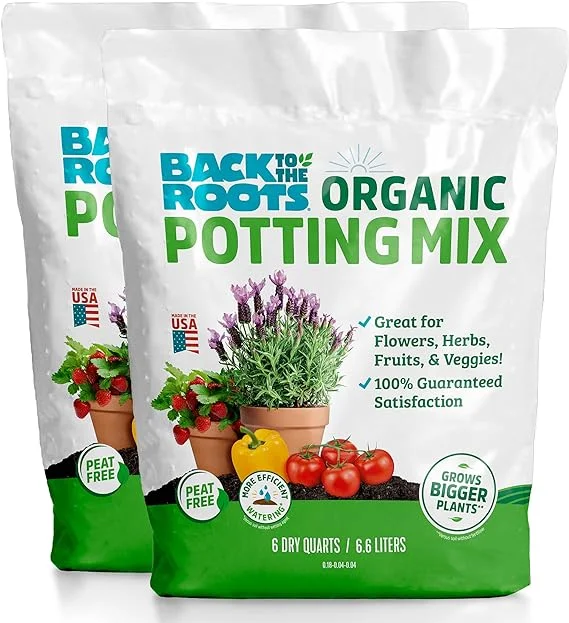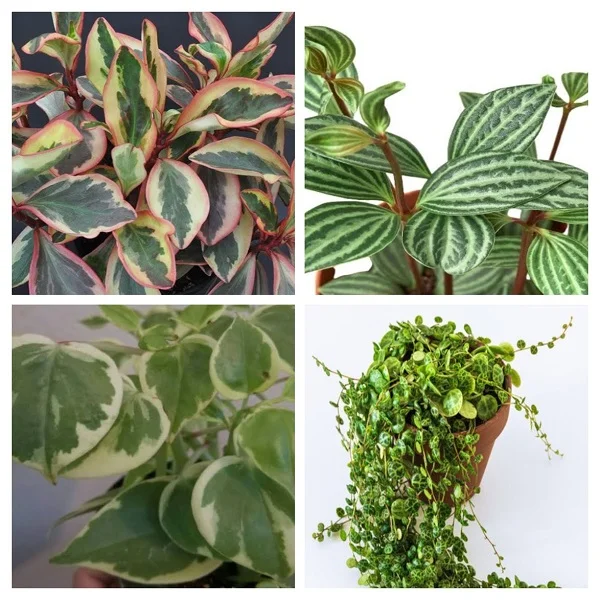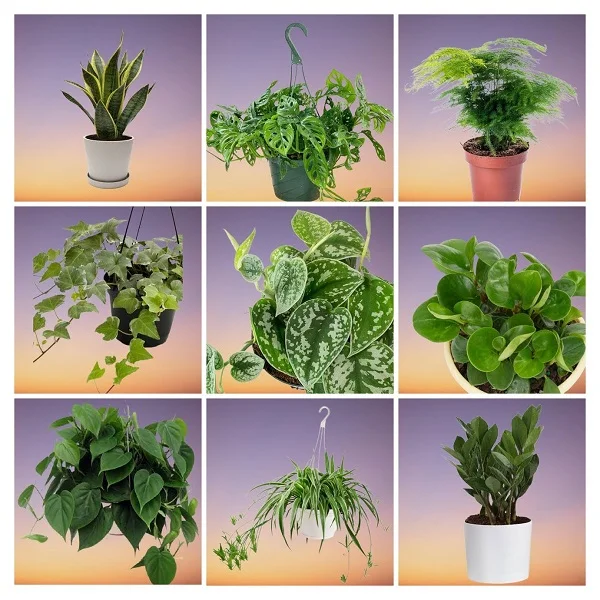Pepper Face Plant (Peperomia obtusifolia) Care Indoors, Propagation and Common Problems
Some links in this post may be affiliate links
Pepper Face Plant (Peperomia obtusifolia) thrives in bright indirect light, moderate warmth, humid conditions and moderately moist, rich, well-drained soil coupled with monthly feeding in the growing season.
Peperomia obtusifolia also called Baby Rubber Plant or American Rubber Plant is one of the popular Peperomia varieties and bears cupped leathery leaves which resembles a rubber plant and hence its common name 'Baby Rubber Plant'.
American Rubber Plant is a compact, upright-growing, hardy plant that will thrive even when the growing conditions are less than perfect. It does not require too frequent watering but needs bright light away from direct sunshine.
Baby Rubber Plant is a popular plant and numerous cultivars have been developed including variegated ones. The flowers insignificant, narrow spikes of white flowers which grow in a winding manner.
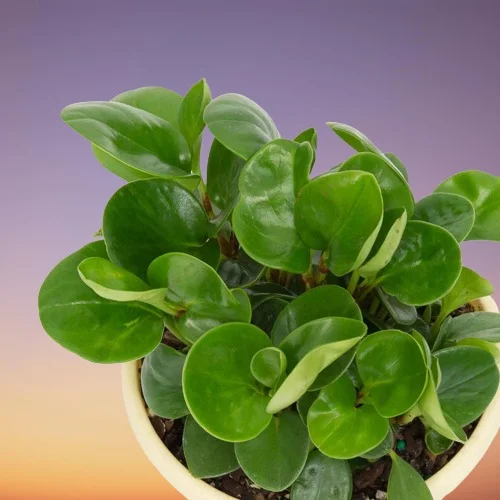
Botanical name: Peperomia obtusifolia
Family: Piperaceae
Common names: Pepper Face Plant, Baby Rubber Plant, American Rubber Plant
Origin
Peperomia obtusifolia is an evergreen, perennial plant that is native to the tropical rain forests in Florida, Mexico and the Caribbean. It is one of the best tropical foliage plants for the home, office and other spaces.
Is Peperomia obtusifolia poisonous?
Peperomia obtusifolia like other Peperomia Plants is non-toxic to both humans and pets. The plants are some of the pet-friendly plants that you may grow in the home.
Where to Buy
Baby Rubber Plants are a perfect addition to your collection. You may acquire these plants online from Amazon (Link to Amazon).
How to Care for Peperomia obtusifolia indoors?
Caring for Peperomia obtusifolia indoors pertains to giving it bright indirect light, moderate warmth of 18-250C, average humidity of 50-55% and moderately moist, fertile, well-drained, all purpose potting soil coupled with monthly feeding during the growing season.
Pepper Face Plant care requires regular pruning to keep it neat and minimize pest and disease infestations. Repotting is only needed when the plant becomes pot-bound. Keep reading for more on these growing conditions and how to achieve them.
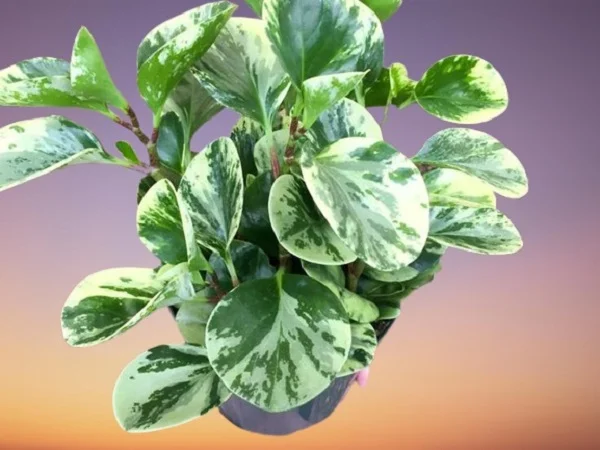
Watering
How often should I water Peperomia obtusifolia?
Water Peperomia obtusifolia liberally in spring and summer and allow the top 2-3 inches of soil to dry out between waterings. Maintain the soil moderately moist and avoid soggy soil to prevent yellowing and leaf drop.
Reduce watering in fall and winter to keep the soil barely moist as growth is minimal at this time. However, do not allow the soil to dry out completely to avoid wilting and leaf drop.
Use room temperature water to prevent plant shock which can result in slowed growth and leaf drop.
Confirm that the pot has a drainage hole and the soil is well-draining to prevent waterlogging as it can lead in root-rot and death of the plant.
Light Requirements
Where is the best to put Pepper Face Peperomia?
Pepper Face Peperomia grows best in bright indirect light. Keep it away from direct sunshine as it can lead to discoloration of the leaves.
It can tolerate medium to low indirect light. However, bright light is necessary to maintain the bright and intense color of the leaves especially for the variegated types. If the natural lighting is not adequate, you may use a full spectrum grow light to supplement it.
Regularly turn the pot to ensure that the plant receives light on all sides for even growth and also prevent leggy growth.
Temperature & Humidity
Pepper Face Plant flourishes in an average warmth of 18-250C. A room temperature that is comfortable for you is ideal for these plants.
If the temperatures are outside this range, they impact the growth of the plant negatively. Keep the plant away from drafts as they can cause reduced growth and leaf drop.
Peperomia obtusifolia requires a humidity of 50-55%; it has no need for extra humidity. However, if the air is too dry it may cause brown leaf tips and edges. To elevate humidity, set the pot on a wet pebble tray, use a humidifier or group the plants together. Ensure there is good air circulation to reduce fungal diseases.
Feeding
What is the best fertilizer for Peperomia obtusifolia?
Feed Peperomia obtusifolia with a balanced, liquid fertilizer every 4 weeks in spring and summer to promote a lush growth.
Do not feed in fall and winter as growth is slowed and feeding at this time may lead to fertilizer burn and death of the plant.
Potting Soil
What kind of soil does Peperomia obtusifolia like?
The best soil for Peperomia obtusifolia should be a rich, well-draining mix that does not get soggy while providing the required nutrients.
Repotting
Repot Pepper Face Plant during the growing season only when the plant has become pot-bound. However, you can refresh the soil at the beginning of the growing season if not repotting.
Use a pot one size larger than the current one as it grows slowly. Ensure the pot has a drainage hole to prevent the soil from getting soggy to avoid root-rot. A shallow rather than deep pot is preferable as it has a small root system. Check out these pots with drainage holes on Amazon.
Pruning & Grooming
Pruning Peperomia obtusifolia involves:
- Regular removal of dead foliage to maintain the plant neat and tidy as well as discourage pest and disease infestations.
- Pinching off the growing tips regularly to encourage a bushy compact growth and to control growth. You may use the stem tips to propagate new plants.
Clean the leaves regularly by damp-wiping with a soft cloth to get rid of dust and also discourage pest and disease infestations.
Peperomia obtusifolia Propagation
Peperomia obtusifolia (Pepper Face Plant) is propagated from leaf cuttings or from stem cuttings in spring to early summer when the plant is actively growing.
1. Propagating Peperomia obtusifolia from leaf cuttings
The leaf cuttings root easily, therefore there is no need for a rooting hormone.
Take leaf cuttings from a healthy plant and ensure each cutting has a petiole.
Allow some time for the formation of a protective callus tissue over the cuts of the leaf cuttings to prevent rotting.
Once callused, place the leaf cuttings in a jar of clean plain water or in a propagation station and change the water every 5-7 days.
Place the set up in warm, well-lit place until growth begins at the base of the cuttings leaf petiole.
Allow enough time for substantial growth of the roots and new leaves and transfer the new plants to individual pots in moist, free-draining soil. For a fuller plant, transfer several plants into one pot.
Position the pots in a warm, well-lit place away from direct sunlight.
Maintain the soil moist until the new plants are well established after which routine care can begin.
2. Propagating Peperomia obtusifolia from stem cuttings
The stem cuttings root easily, therefore, there is no need for a rooting hormone.
Take stem cuttings of about 4-5 inches length from a healthy plant and ensure that each cutting has at least 2 sets of leaves.
Allow some time for the formation of a protective callus tissue over the cuts of the cuttings to prevent rotting.
Once callused, insert the cuttings in moist, free-draining soil and place the set up in warm, well-lit place away from direct sunlight.
Maintain the soil moist until new growth emerges and there is substantial growth on the cuttings.
Transfer the new plants to individual pots and begin routine care. For a fuller plant, transfer several cuttings into one pot.
Related Content: How to Propagate Peperomia by 4 Easy Methods.
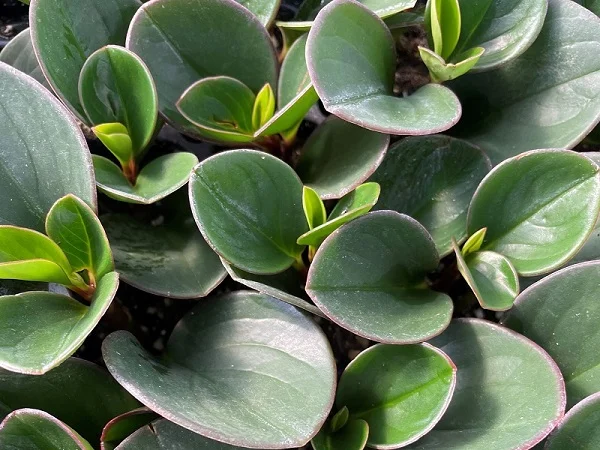
Peperomia obtusifolia Problems & Remedies
Peperomia obtusifolia (Pepper Face Peperomia) problems are dropping leaves, plant dying, drooping leaves, brown leaf tips, dull leaves, diseases and pests among others. Keep reading for more on these problems and how to solve them.
Dropping leaves
Why is my Peperomia obtusifolia dropping leaves?
Your Peperomia obtusifolia is dropping leaves due to temperature stress, inconsistent watering, and soggy soil.
How to fix it
Temperature stress: Move the plant to a warmer spot away from drafts and maintain a warmth of 18-250C.
Inconsistent watering: Do not water on a schedule. Water when the top 2-3 inches of soil dry out but do not allow the soil to dry out completely.
Soggy soil: Use a well-draining soil and a pot with a drainage hole.
Related Content: 12 reasons why Peperomia is dropping leaves and their solutions.
Plant dying
Why is my Peperomia obtusifolia dying?
Your Peperomia obtusifolia is dying due to root-rot which is common in soggy soil. It is characterized by yellowing and wilting of the leaves which is rapidly followed by browning and plant collapse.
How do you revive Peperomia obtusifolia?
- Slip the plant out of its pot and inspect the roots.
- Trim brown-black mushy roots and treat the healthy roots with a copper-based fungicidal solution as instructed by the manufacturer.
- Disinfect the pot with the fungicidal solution or use a fresh pot to repot the plant in fresh, well-draining soil.
- Do not water the plant immediately; keep it dry for some time before you resume watering.
- Use a pot with a drainage hole to prevent the soil from getting soggy.
- Lessen watering in fall and winter as growth is slowed at this time; maintain the soil slightly moist.
Drooping leaves
Drooping leaves on Pepper Face Plant is caused by direct sunlight, incorrect watering, soggy soil, drafts, and being pot-bound. Thoroughly water the plant immediately and it should perk up.
How to fix it
Direct sunlight: Move the plant to a shadier spot or instal a light curtain to prevent the sunlight from reaching the leaves.
Incorrect watering: Water when the top 2-3 inches of soil feel dry and do not let the soil dry out completely.
Soggy soil: Ensure that the pot has a drainage hole and that the soil is free-draining.
Drafts: Keep the plant away from both cold and hot drafts emanating from AC units, stoves, windy doors, drafty windows among others.
Being pot-bound: Repot the plant at the beginning of the growing season (spring) when you spot the roots growing through the drainage hole.
Related Content: 14 reasons why Peperomia leaves are drooping and how to fix them.
Brown leaf tips
Brown leaf tips and edges on Pepper Face Peperomia are due to extreme temperatures and dry air. Remove all the damaged leaves to keep the plant neat and tidy.
How to fix it
Extreme temperatures: Keep the plant away from drafts and maintain an average warmth of 18-250C.
Dry air: Use a wet pebble tray or a humidifier, or group the plants together to upscale humidity.
Dull leaves
Dull leaves on Pepper Face Plant are due to exposure to direct sunlight. Protect the plant from direct sunlight or move it to a more shaded spot.
Diseases
Peperomia obtusifolia is also prone to leaf spot disease which is promoted by poor air circulation and presents as brown, soft leaf spots.
How to fix it
- Isolate the affected plant and treat it with systemic fungicide as per the manufacturers' recommendations.
- Avoid wetting the leaves during watering to minimize the disease infestation.
- Ensure proper air flow for the plant to discourage the disease.
Pests
Common pests on Peperomia obtusifolia are spider mites, whiteflies, scale insects and mealybugs.
How to fix it
- Isolate the affected plant to prevent spread to other plants and treat it with neem oil or insecticidal soap as per the manufacturer's instructions.
- Check underneath and between the leaves for these pests and carry out timely control measures.
- Keep the plant well pruned and raise humidity to discourage the pest infestations.
You liked it? Share on social media.
Related Content
Amazon Associates Disclosure
Homeplantsguide.com is a participant in the Amazon Services LLC Associates Program, an affiliate advertising program designed to provide a means for sites to earn advertising fees by advertising and linking to amazon.com.
